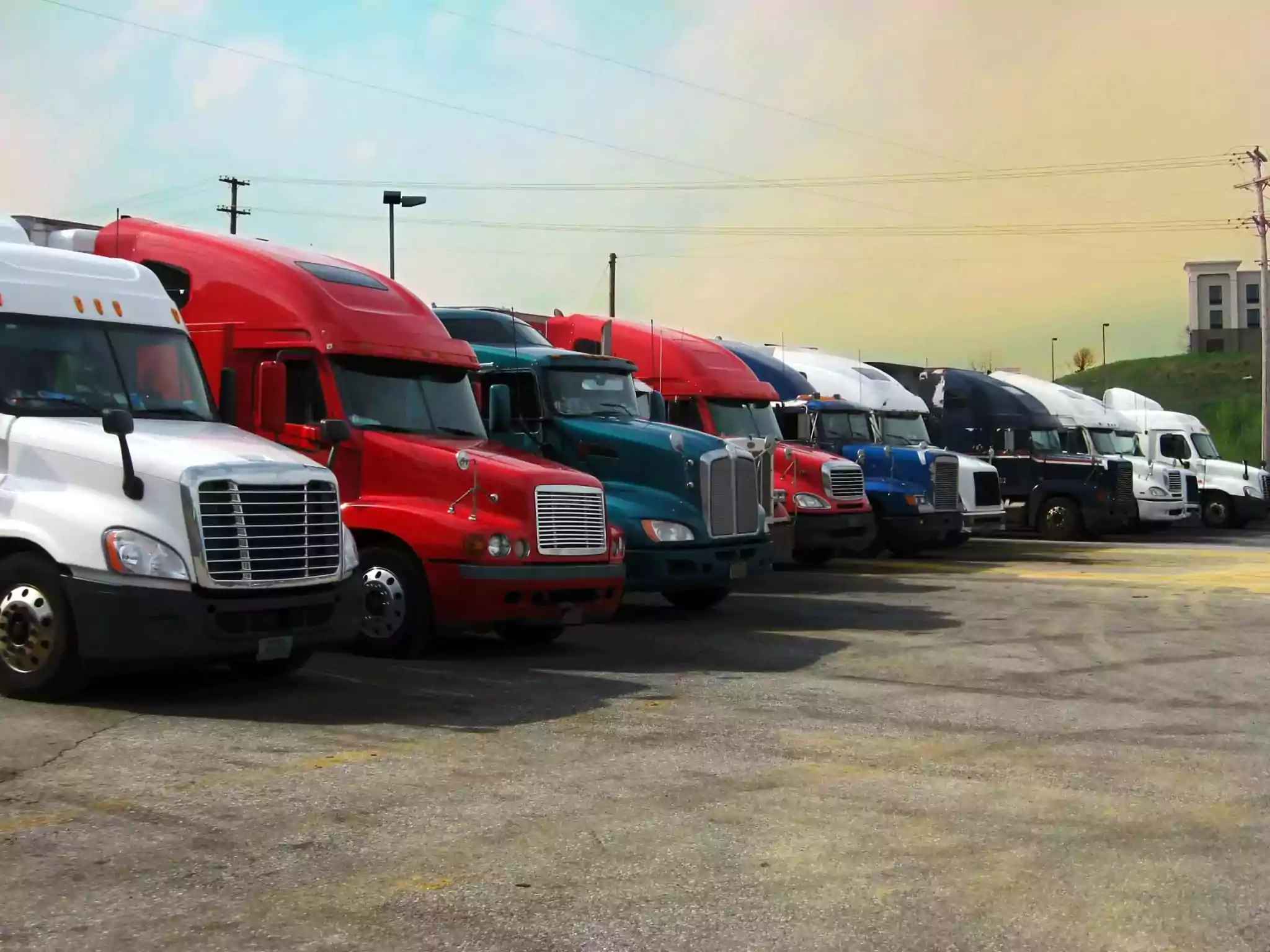The Ultimate Guide to Electronic Logbooks for Truck Drivers

Keeping accurate records of driving hours and compliance with federal regulations is crucial for fleets of all sizes. Gone are the days of manually logging hours on paper, as electronic logbooks have become the industry standard. In this ultimate guide, we will take a deep dive into electronic logbooks and everything truck drivers need to know about them.
Understanding Electronic Logbooks
Before we delve into the nitty-gritty details, let’s start by understanding what electronic logbooks are and why they are so important in the trucking industry.
Electronic logbooks have revolutionized the way truck drivers maintain and report their driving hours and activities. Gone are the days of manual logbooks that were prone to errors and inaccuracies. With electronic logbooks, also known as Electronic Logging Devices (ELDs), drivers can now rely on a digital solution that ensures accurate and efficient tracking of their driving data.
What is an Electronic Logbook?
An electronic logbook, also known as an ELD (Electronic Logging Device), is a digital solution that enables truck drivers to record, manage, and share their driving hours and other relevant data with ease.
These devices are equipped with user-friendly interfaces that make it simple for drivers to input their information and for fleet managers to access and monitor the data in real-time. The electronic logbook serves as a comprehensive record-keeping tool that enhances transparency and compliance within the trucking industry.
Importance of Electronic Logbooks in Trucking
Electronic logbooks play a vital role in ensuring the safety of both truck drivers and other road users. By accurately tracking and limiting driving hours, they help prevent driver fatigue and reduce the risk of accidents caused by drowsy driving.
Moreover, electronic logbooks provide valuable documentation that can be used for compliance purposes during inspections, audits, or in the event of an accident.
With the implementation of electronic logbooks, the trucking industry has seen a significant improvement in overall safety standards and regulatory compliance. These devices not only benefit individual drivers and companies but also contribute to the greater goal of enhancing road safety for everyone.
How Electronic Logbooks Work
Electronic logbooks work by connecting to the truck’s engine and automatically recording driving time based on vehicle movement. They track a range of data, including driving time, rest periods, duty status changes, and miles driven.
These devices are designed to simplify the process of recording and managing hours of service, freeing up valuable time for truck drivers to focus on their core responsibilities.
By leveraging advanced technology and data analytics, electronic logbooks provide valuable insights that can help optimize route planning, fuel efficiency, and overall operational performance. The integration of electronic logbooks into the trucking industry represents a significant step forward in modernizing and streamlining operations for greater efficiency and safety.
Choosing the Right Electronic Logbook
Now that we have a solid foundation, let’s explore how truck drivers can choose the right electronic logbook for their needs.
Electronic logbooks have revolutionized the trucking industry, providing a streamlined and efficient way for drivers to track their hours of service. But with so many options available, it can be overwhelming to find the perfect fit. That’s why we’ve compiled a list of key features to look for when evaluating different electronic logbook options.
Key Features to Look For
When evaluating different electronic logbook options, there are several key features to consider. Look for user-friendly interfaces that make it easy for drivers to navigate and input their data. Clear and concise reporting capabilities are also essential, allowing you to generate accurate and comprehensive reports with just a few clicks.
Customizable settings are another important feature to consider. Every trucking operation is unique, so having the ability to tailor the logbook to your specific needs is crucial. And don’t forget to check if the logbook integrates with other software that you may already be using, such as dispatch or fleet management systems.
Additionally, ensure that the electronic logbook you choose is compliant with all relevant regulations and up-to-date with any future changes in the industry. Compliance is not something to be taken lightly, as non-compliance can result in hefty fines and penalties. So, it’s important to choose a logbook that stays on top of regulatory requirements.
Comparing Different Electronic Logbook Brands
With a myriad of electronic logbook brands available in the market, it’s important to explore and compare what each one offers. Check customer reviews to get insights from other truck drivers who have firsthand experience with the logbook. Ask for recommendations from fellow drivers who have similar needs and preferences.
Consider factors like customer support and ease of installation. A logbook is only as good as the support behind it, so make sure the provider offers reliable and responsive customer support. Installation should also be a breeze, as you don’t want to waste precious time and energy trying to figure out a complex system.
Remember, finding the right electronic logbook is like finding a trustworthy mechanic – you want someone who understands your needs and can provide reliable support when you need it the most.
Cost Considerations
While cost is an important factor to consider, don’t make it the sole determining factor. After all, the value that the electronic logbook brings in terms of efficiency, accuracy, and compliance is priceless. Investing in a reliable and robust solution is worth the price, especially when it comes to avoiding hefty non-compliance fines.
Take into account installation fees, monthly subscription costs, and any additional fees associated with training or support. Remember, a good electronic logbook is an investment in your business and your peace of mind. It will save you time, reduce paperwork, and ensure that you are always in compliance with the regulations.
So, when choosing an electronic logbook, consider the long-term benefits it can bring to your trucking operation. Don’t just focus on the upfront cost, but also think about the value it will provide in the years to come.
Transitioning from Paper to Electronic Logbooks
So, you’ve made the decision to transition from paper to electronic logbooks. Congratulations on taking this step towards a more efficient and streamlined logging process! While this transition may seem daunting at first, fear not! We are here to guide you through the process and ensure a smooth and successful switch.
Steps to Make the Switch
Begin by researching and selecting the electronic logbook that best fits your needs. Consider factors such as user-friendliness, compatibility with your existing systems, and the level of support provided by the software provider. Once you have made your choice, it’s time to ensure that your vehicle is compatible with the chosen device. In some cases, you may need to install additional hardware or software to facilitate the transition.
Now that everything is set up, take the time to familiarize yourself with the electronic logbook’s interface and features. Explore its functionalities, such as automated data entry, real-time tracking, and reporting capabilities. To gain confidence in using the new system, we recommend testing it out on shorter trips before fully transitioning to electronic logging for all your drives.
Overcoming Common Challenges
Transitioning from paper to electronic logbooks may come with its fair share of challenges. However, with determination and a positive mindset, you can overcome them and embrace the benefits of digital logging. One common challenge is driver resistance to change. Some drivers may be accustomed to the traditional pen-and-paper method and may initially find it difficult to adapt to the new electronic system.
To address this challenge, it is crucial to provide comprehensive training to all drivers. Explain the advantages of electronic logbooks, such as improved accuracy, reduced paperwork, and simplified record-keeping. Offer consistent support throughout the transition period, answering any questions or concerns that may arise. By fostering a supportive environment, you can help your drivers embrace the digital era and make the most of technological advancements.
Another challenge that may arise during the transition is learning the new system. While electronic logbooks are designed to be user-friendly, it is natural for users to take some time to become fully comfortable with the software. To overcome this challenge, encourage your drivers and fleet managers to actively engage with the training materials provided. Offer hands-on practice sessions and create a space for open communication, where users can share their experiences and learn from one another.
Training for Drivers and Fleet Managers
When adopting electronic logbooks, it’s crucial to invest time and resources into training both your drivers and fleet managers. Provide detailed instructions on how to use the electronic logbook, including step-by-step guides on data entry, generating reports, and troubleshooting common issues. Emphasize the importance of accurate data entry and explain how it contributes to compliance and safety within your fleet.
Furthermore, training helps foster a culture of compliance and safety within your organization. Regularly communicate and reinforce the significance of electronic logbooks, ensuring that drivers and fleet managers understand their roles and responsibilities. By investing in comprehensive training, you empower your team to make the most of the electronic logbook system and maximize its benefits.
In conclusion, transitioning from paper to electronic logbooks is a significant step towards efficiency and accuracy in your logging process. By following these steps and overcoming common challenges, you can ensure a successful transition. Remember, we are here to support you every step of the way as you embrace the digital era and unlock the full potential of electronic logbooks.
Legal Requirements and Compliance
Understanding the legal requirements and ensuring compliance with electronic logbooks is paramount for truck drivers and fleet managers.
Federal Regulations for Electronic Logbooks
In December 2015, the Federal Motor Carrier Safety Administration (FMCSA) implemented regulations requiring the use of electronic logbooks for most commercial motor vehicles (CMVs). These regulations, known as the ELD mandate, aim to improve road safety and prevent falsification of records.
Make sure your chosen electronic logbook is compliant with all the specified requirements outlined by the FMCSA to avoid penalties and maintain a good standing within the industry.
Ensuring Compliance with Electronic Logbooks
To ensure compliance, it’s crucial to use your electronic logbook as intended and follow the rules and regulations set forth by the FMCSA. Regularly review your logbook entries for accuracy, maintain supporting documentation, and promptly address any issues or discrepancies that arise.
Remember, compliance is not a one-time effort but an ongoing commitment to safety and accountability.
Penalties for Non-Compliance
Non-compliance with electronic logbook regulations can result in severe penalties, ranging from fines to out-of-service orders. These penalties not only impact your business financially but also tarnish your reputation within the industry.
Stay proactive, stay compliant. Invest the time and effort into understanding and adhering to the regulations to protect your business and keep the roads safe for everyone.
Electronic logbooks have revolutionized the trucking industry by simplifying the recording and management of driving hours and compliance. By choosing the right electronic logbook, transitioning from paper, and staying compliant with regulations, truck drivers can navigate the roads confidently while prioritizing safety and efficiency.
Embrace the power of electronic logbooks and discover a new level of simplicity and peace of mind in your trucking journey.





